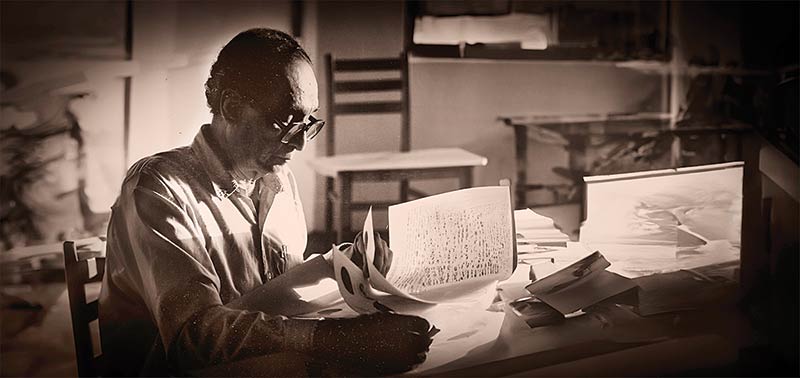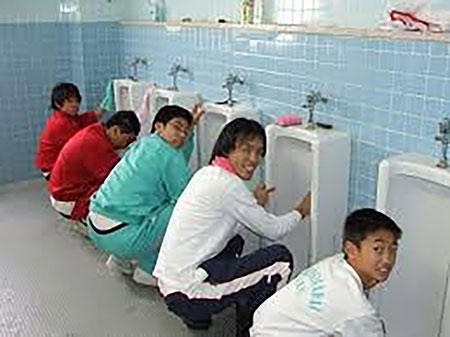Features
…IN SEARCH OF NIHAL FERNANDO
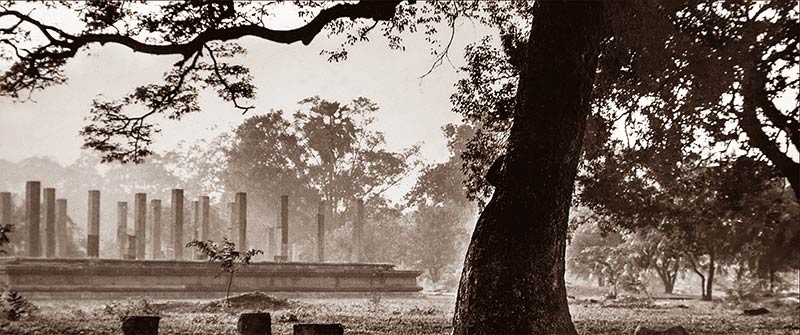
by Rohan Wijesinha
A film by Martin Pieris
Lionel Wendt Arts Centre
24th February 2025
6.30pm
Free Admission
At the beginning of this month, the Barefoot Gallery hosted an exquisite exhibition of the photography of Nihal Fernando (NF), and of some of the photographers and artists who were inspired by him. Those who were privileged to see it would understand that the superlatives used to describe his artistry are woefully inadequate in describing his creative skill; turning the two dimensional into three…and even more.
What shaped this unique human being? What influenced him to become who he was? Where was his inspiration from? Always modest, never the one to pamper his own ego, NF never wrote a biography and would probably have baulked at the idea of one being done. He lived in the knowledge that his work would be his legacy, not just his photographs, but all that he fought for – to preserve the rich natural and cultural heritages of Sri Lanka. As such, it is fortuitous that in a completely different endeavour, timed almost perfectly to coincide with the aforementioned exhibition, is the release of the film “…in search of Nihal Fernando”. This tries to answer some of these questions.
The filmmaker
Dr. Martin Pieris was born in Sri Lanka and lived here for the first 12 years of his life. A child of diplomats, he travelled with his parents to Ghana and Australia, before finally settling in Australia. His background is in the field of commercial photography in Canberra and Sydney, and in Academia at the Canberra School of Art, ANU, University of Newcastle, Australia and Torrens University, in Fine Art and Digital Imaging. He is a newcomer to film making, with a passion originating in the love of the photographic narrative and storytelling. Dr Pieris has been steadily researching and growing an understanding and deep respect for the work of Sri Lankan artists, creative individuals and groups. His intention, to grow a global awareness of Sri Lankan culture and art practices. As he describes it,
“My first film, Song of Lanka, began during my PhD research at the University of Newcastle in 2015 – an opportunity to fulfill a lifelong dream of combining visual imagery with sound and music to form a narrative. Since completing my research, based on the influences of the 43 Group on Sri Lankan contemporary art, in 2021… I have completed two
…IN SEARCH OF NIHAL FERNANDO other films ‘From Isle of Wight to
Ceylon – Julia Margaret Pattle Cameron’ in 2022
and a’…trouble with Laki – life and times of the Sri Lankan artist Laki Senanayake 1937-2021, in 2023…all three films have a Sri Lankan narrative.”
“Unfortunately, I never met Nihal Fernando. As one of the interviewees in the film points out “the artistic history of Sri Lanka will always remember Nihal Fernando because of his exquisite photography, but that would be a travesty, if he was only remembered for that, because he was totally committed to conservation, the protection of wild places, wild creatures of Sri Lanka, and to the people. Because conservation is primarily about people. When we fight for the environment, we fight to save our natural world, we are also fighting for ourselves…”
The film highlights NF’s breathtaking photography of Sri Lanka which he captured throughout his life with immense skill and dedication, promoting the natural wilderness – “The Wild, The Free, and The Beautiful” (the title of one of his several publications). The film includes interviews with those he influenced, not only with his photography, but also his love and attention to the wildlife and wild places and the people of Sri Lanka.
A visually stunning film
Previews of the film contain spectacular visuals of NF’s work, of the places and subjects he photographed, and the views of some those he was close to. Unsurprising, this level of visual clarity, for Dr Pieris, amongst his numerous academic achievements, is a Doctor in Fine Art. In addition to his films, he has also published books on Sri Lanka, of portraits and personal stories, The Sri Lankans – a portrait of a developing nation, published in 2007. The Sri Lankan narrative continued with Serendip to Sri Lanka – a photographic journey in 2012 and subsequently “The ˙43 Group and its Legacy in Sri Lanka”, completed in 2021.
It is very apparent from his work that Dr Pieris, too, shares a great love for the land of his birth, and of the creativity that it has fostered among its people. As he states,
“My intention is to pursue the Sri Lankan narrative in selected areas of the arts – the stories that interest and inform me about the personal achievements of individuals and groups; the pursuit of excellence, facing all hindrances that a particular environment offers. I find filmmaking offers me the opportunity, in a myriad of ways, to combine visuals, sounds, music and voices to develop a story and in turn, develop my own skills in each of these areas.”
As such, the evening of Feb. 24 seems a perfect way to spend an evening to watch Dr Pieris’s search unfold, on 24 foot screen, and to revel in the artistry of one of Sri Lanka’s legends of photographic art and humanity, Nihal Fernando, and the visual, narrative skills of Dr. Martin Pieris.
Features
Batalanda Skeletons, Victims’ Sorrows and NPP’s Tasks
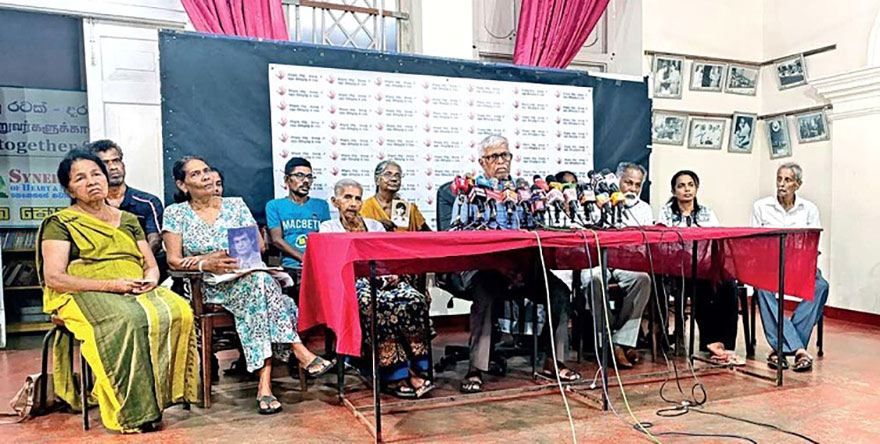
Few foresaw skeletons of Batalanda come crashing down in a London television interview. There have been plenty of speculations about the intended purposes and commentaries on the unintended outcomes of Ranil Wickremesinghe’s Al Jazeera interview. The more prurient takes on the interview have been about the public dressing down of the former president by the pugnacious interviewer Mehdi Hasan. Only one person seems convinced that Mr. Wickremesinghe had the better of the exchanges. That person is Ranil Wickremesinghe himself. That is also because he listens only to himself, and he keeps himself surrounded by sidekicks who only listen and serve. But there is more to the outcome of the interview than the ignominy that befell Ranil Wickremesinghe.
Political commentaries have alluded to hidden hands and agendas apparently looking to reset the allegations of war crimes and human rights violations so as to engage the new NPP government in ways that would differentiate it from its predecessors and facilitate a more positive and conclusive government response than there has been so far. Between the ‘end of the war’ in 2009, and the election of President Anura Kumara Dissanayake and the NPP government in 2024, there have been four presidents – Mahinda Rajapaksa, Maithripala Sirisena, Gotabaya Rajapaksa and Ranil Wickremesinghe – and as many governments. Of the four, Ranil Wickremesinghe is the least associated with the final stages of the war and its ending. In fact, he was most associated with a failed, even flawed peace process that ultimately ensured the resumption of the war with vengeance on both sides. RW was also the most receptive to war crimes investigations even proffering that external oversight would not be a violation of Sri Lanka’s Constitution.
One school of thought about the Al Jazeera interview is that those who arranged it were hoping for Ranil Wickremesinghe to reboot the now stalling war crimes project and bring pressure on the NPP government to show renewed commitment to it. From the looks of it, the arrangers gave no thought to Ranil Wickremesinghe’s twin vulnerabilities – on the old Batalanda skeletons and the more recent Easter Sunday bombings. If Easter Sunday was a case of criminal negligence, Batalanda is the site of criminal culpability. In the end, rather than rebooting the Geneva project, the interview resurrected the Batalanda crimes and its memories.
The aftermath commentaries have ranged between warning the NPP government that revisiting Batalanda might implicate the government for the JVP’s acts of violence at that time, on the one hand, and the futility of trying to hold anyone from the then government accountable for the torture atrocities that went on in Batalanda, including Ranil Wickremesinghe. What is missing and overlooked in all this is the cry of the victims of Batalanda and their surviving families who have been carrying the burden of their memories for 37 years, and carrying as well, for the last 25 years, the unfulfilled promises of the Commission that inquired into and reported on Batalanda.
The families impacted by Batalanda gave a moving illustration of the agony they have been going through for all these years in a recent media briefing, in Colombo, organized by the indefatigable human rights activist Brito Fernando. I am going by the extensive feature coverage of the media event and the background to Batalanda written by Kamanthi Wickremesinghe in the Daily Mirror (March 20, 2025). I am also borrowing her graphics for illustration – a photograph of the media briefing and a map of Sri Lanka showing the scattered sites of mass graves – 20 in all.
“We express gratitude to this government for providing the environment to discuss and debate about the contents of this report,” said Brito Fernando, speaking for the families. After addressing Ranil Wickremesinghe’s obfuscations about his involvement, and decrying Chandrika Kumaratunga’s failure to act on the recommendations of the report of the Batalanda Commission of Inquiry she created, Mr. Fernando appealed to the present NPP government to “provide a secure environment where these victims could come out and speak about their experiences,” Nothing more, nothing less, and that is all there is to it.
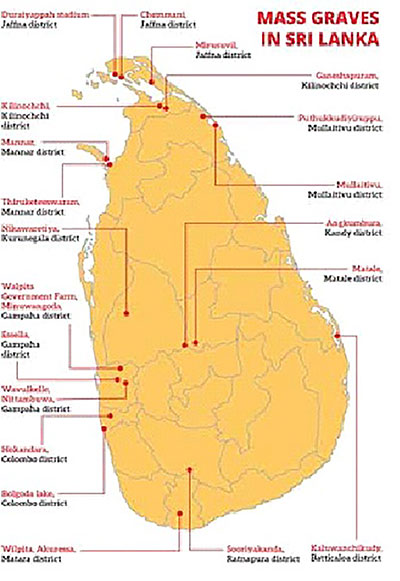 Whatever anyone else might say, the victims of Batalanda and their survivors have vindicated the NPP government’s decision to formally table the Batalanda Commission Report in parliament. As for their continuing expectations, Brito Fernando went on say, “We have some hopes regarding this government, but they should walk the talk.” Mr. Fernando suggested that the government should co-ordinate with the UNHRC’s Sri Lanka Accountability Project that has become a valuable resource for preserving evidence and documentation involving human rights crimes and violations over many decades. In addition, Mr. Fernando pointed out that the grieving families have not been involved in the ongoing excavations of mass graves, and they are anxious to receive the remains of their dear ones after their identity is confirmed through DNA analyses. Nor has there been any sign of legal action being taken against any of the suspects connected to the mass graves.
Whatever anyone else might say, the victims of Batalanda and their survivors have vindicated the NPP government’s decision to formally table the Batalanda Commission Report in parliament. As for their continuing expectations, Brito Fernando went on say, “We have some hopes regarding this government, but they should walk the talk.” Mr. Fernando suggested that the government should co-ordinate with the UNHRC’s Sri Lanka Accountability Project that has become a valuable resource for preserving evidence and documentation involving human rights crimes and violations over many decades. In addition, Mr. Fernando pointed out that the grieving families have not been involved in the ongoing excavations of mass graves, and they are anxious to receive the remains of their dear ones after their identity is confirmed through DNA analyses. Nor has there been any sign of legal action being taken against any of the suspects connected to the mass graves.
The map included here shows twenty identified mass graves spread among six of the country’s nine provinces. There could be more of them. They are a constant reminder of the ravages that the country suffered through over five decades. They are also a permanent source of pain to those whose missing family members became involuntary tenants in one or another mass grave. The families and communities around these mass graves deserve the same opportunity that the impacted families of Batalanda have been given by the current exposure of the Batalanda Commission Report.
The primary purpose of dealing with past atrocities and the mass graves that hold their victims is to give redress to survivors of victims, tend to their long lasting scars and reengage them as free and full members of the community. Excavation and Recovery, DNA Analysis and Community Engagement have become the three pillars of the recuperation process. Sri Lanka is among nearly a hundred countries that are haunted by mass graves. Many of them have far greater numbers of mass graves assembled over even longer periods. Suffering and memories are not quantitative; but unquantifiable and ineluctable emotions. The UN counts three buried victims as a mass grave. Even a single mass grave is one too many.
To do nothing about them is a moral and social copout at every level of society and in the organization of its state. Normalising the presence of mass graves is never an option for those who live around them and have their family members buried in them. Not for them who have built up over centuries, emotional systems of rituals for parting with their beloved ones. And it should not be so for governments that would otherwise go digging anywhere and everywhere in pseudo-archaeological pursuits.
Mass graves are created because of government actions and actions against governments. But governments come and go, and people in governments and political organizations change from time to time. There is a new government in town with a new generation of members in the Sri Lankan parliament, and it is time that this government revisited the country’s past and started providing even some redress to those who have suffered the most. The families of the Batalanda victims have vindicated the NPP government’s action to officially publicise the Batalanda Commission Report. The government must move on in that direction ignoring the carping of critics who selectively remember only the old JVP’s past.
There is more to what the government can do beyond mass graves. The Batalanda Commission Report is one of reportedly 36 such reports and each Commission has provided its fact findings and recommendations. Hardly any of them have been acted upon – not by the governments that appointed them and not by the governments that came after and created their own commissions. The JVP government must seriously consider creating a one last Commission, a Summary Commission, so to speak, to pull together all the findings and recommendations of previous commissions and identify steps and measures that could be integrated into ongoing initiatives and programs of the government.
The cynical alternative is to throw up one’s hands and do nothing, similar to cynically leaving the mass graves alone and doing nothing about them. The more sinister alternative was what Gotabaya Rajapaksa attempted when he appointed a new Commission of Inquiry to “assess the findings and recommendations” of previous commissions. That attempt was roundly condemned as a witch hunt against political opponents set up under the 1978 Commissions of Inquiry Act that was specifically enacted to enable the targeting political opponents under the guise of an inquiry. Repealing that act should be another consideration for the NPP government.
I am just floating the idea of a Summary Commission as a potential framework to bring positive closure to all the war crimes, emblematic crimes and human rights violations that have been plaguing Sri Lanka for the entire first quarter of this century. It is a political idea befitting the promises of a still new government, and one that would also be a positive fit for the government’s much touted Clean Sri Lanka initiative. For sure, it would be moral cleansing along with physical cleansing. A Summary Commission could also provide a productive forum for addressing the pathetic dysfunctions of the whole law and order system. The NPP government inherited a wholly broken down law and order system from its predecessors, but its critics suddenly see a national security crisis and it is all this government’s fault.
More substantively, a Summary Commission could tap into the resources of the UNHRC in collegial and collaborative ways without the hectoring and adversarial baggage of the past. These must be trying times for the UNHRC, as indeed for all UN agencies, given the full flight of Trumpism in America and its global spill over. Sri Lanka is one of a handful of countries where UNHRC professionals might find some headway for their mission. And the NPP government could be a far more reliable partner than any of its predecessors.
by Rajan Philips
Features
The Run-Up To The General Elections of July 1977
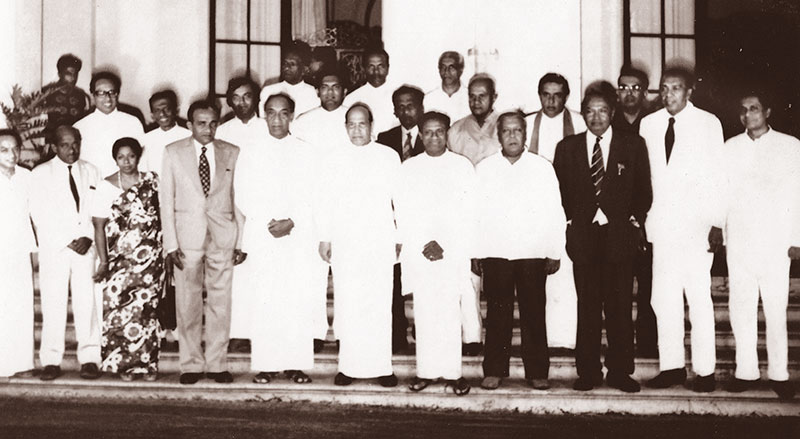
The General Elections were drawing near. There was concurrently a disturbing trend manifesting itself. A vociferous group were demanding that the elections be postponed for a further period, because the government was unable to complete its “progressive” social and economic programme, due to reasons beyond its control such as the insurgency of 1971. the oil price hike, the food crisis and so on. These arguments were patently absurd. The government had already extended its term of office by two years consequent to the introduction of the new constitution.
Now, a group of people were orchestrating a campaign for a further extension. At various public meetings where the Prime Minister attended, members of this group raised their voices and demanded a further extension of time. It appeared to take the form of a popular agitation exerting pressure on the government. No doubt, various persons holding similar views would have been speaking to the Prime Minister personally about the same issue. The whole thing seemed well orchestrated.
It was in this context that one day, she asked my opinion about the matter. I replied that I had always spoken absolutely frankly to her on any and all matters, and in the same spirit all I could say was that any attempt to extend the life of the government would be a total disaster, both for herself and the country. I went on to speak about her considerable achievements, as the world’s first woman Prime Minister; probably also as the first woman to be leader of the opposition in a parliamentary democracy, Head of the Non-Aligned Movement; honouredby the ILO, by their invitation to her, to deliver the keynote address at one of their inaugural sessions; honoured by the FAO by the award of the CERES medal in recognition of her personal and successful leadership of the food production drive consequent to the difficulties of 1974/75; honoured by the United Nations by their invitation to her to deliver the keynote address, at the first UN Conference on Women and Development and other achievements.
Then I told her that if elections were not held at the proper time, the position in the country could get unmanageable, and she would face the charge of destroying democracy in Sri Lanka. I had to be hard, because it was evident that many people had created for her, some kind of fantasy world, and she was getting confused. As was customary, she listened to what I had to say with grace and thanked me for being candid. Then she said, “l have asked WT also, and he said the same thing.”
That was the Prime Minister. She was always prepared to listen to different views, after which, she made up her mind. The dose of reality administered by WT Jayasinghe and myself, two public servants who had nothing to do with politics, would no doubt have helped her to take the final decision of holding elections.
Dealing with political personalities
Before I get to the election itself, I wish to refer to one or two other matters. One of the more important of these relates to some of the political personalities I had to work with, other than the Prime Minister. These included the Minister of Trade, Mr. TB Illangaratne; Mr. Hector Kobbekaduwa, Minister of Agriculture and Dr. Colvin R. de Silva, Minister of Plantation Industries, among others. My dealings with Mr. Maithripala Senanayake, I will refer to separately.
The fact was, that at some time or other one had to deal with practically all members of the Cabinet, since all of them had some business to transact with the Prime Minister’s Office at various times. Some of the ministers I have mentioned had more to do with us, both because of their seniority and the sensitive and important nature of their portfolios. My policy was equal attention and equal treatment for everyone. The internal politics between them did not concern me; neither did the state of relations between the parties in the coalition.
These were political issues that had to be resolved at other fora. I saw my job as attending fairly and diligently to any request or advice sought. There was a creative element in this, because, knowing the prime minister’s mind on many matters I was at times able to steer ministers and others away from courses of action which could have negative consequences. Therefore, many ministers dropped in to discuss some sensitive matter or sometimes to seek advice how best to handle a given situation with the prime minister.
They knew that they could repose trust in the confidentiality of such conversations. At the same time, when I thought that the prime minister had to be briefed on some developing situation, I always said openly that I would have to do so. In some circumstances, the relevant minister and I. only discussed a suitable approach. I did not view my duty to the prime minister as one entailing the carrying of tales or the retailing of gossip and rumours.
However, whenever relevant, gossip and rumours were checked out, because beneath them could lie some real problems. Occasionally, when something was beyond our competence to check, and if it looked important enough the prime minister was briefed. This approach begot a great deal of trust and confidence, so much so that on one occasion, Dr. Colvin R. de Silva told me that he as well as others in the LSSP were extremely sorry that I would not be available for appointment, when a vacancy occurred in the post of Secretary, in the Ministry of Communications, a ministry then held by Mr. Leslie Goonewardena, a senior LSSP minister. In his booming voice, he paid me the compliment of saying that they were not only looking for a secretary but also “a man.”
Besides dealing with ministers and government personalities, the secretary to the prime minister had also to deal with many opposition personalities. They received the same treatment as anybody else. If a request was valid, one worked to grant it. If in a particular instance, politics were proving to be an irrelevant and extraneous factor, one proceeded to remove it. Sometimes, this necessitated talking to the prime minister, and if she too were inclined to see only the politics, one analyzed the issue and pointed out that politics had no relevance to the issue, and that in her position she had to do the right thing. All this meant extra work and effort, but I considered it as part of a duty that had to be performed.
In this context, I was able at times to resolve genuine problems faced by opposition MP’s and personalities such as Mr. R. Premadasa, Mr. Gamini Dissanayake, Mr. Lalith Athulathmudali and others. My belief was that the prime minister’s office of a country should act fairly and justly on all matters referred to it subject to overall government policy. When the occasion so demanded, my endeavour was to point out that irrelevant or extraneous considerations could not be the foundation of good policy. They could be petty revengeful acts, harassment or abuse of power, but never policy, and it was my firm belief that those at the helm of affairs of a country should always distinguish between these.
All these meant an addition to an already nearly crippling workload. There were even times when one continued to work when one had fever, in order to meet impending deadlines. Indeed, there were a few occasions during the seven years I held this post, that when I eventually reached home in the night my temperature had risen to over 104°F.
(Excerpted from In Pursuit of Governance, autobiography of Dharmasiri Peiris, Secretary to the Prime Minister)
Features
My Life-Changing Training in Japan
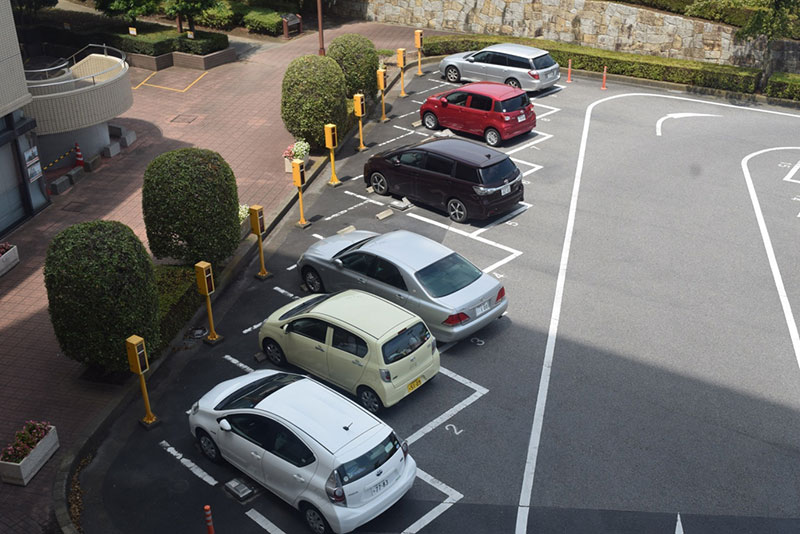
LESSONS FROM MY CAREER: SYNTHESISING MANAGEMENT THEORY WITH PRACTICE – PART 8
It was a selection by chance. I had barely completed my first year at the Ceylon Tyre Corporation when an opportunity arose to follow a three-month course in Japan. This course was for Industrial Engineers in Manufacturing organisations. As the Industrial Engineer at the Tyre Corporation it suited me well. I applied with much hope. But only to be informed that three years of service at the corporation is required to be entitled to a fellowship.
This was an internal rule at the corporation. My assistant applied and was selected, but some procedural delays prevented him from being selected for the final stage. The following year, he applied again, but something went wrong and he missed out again. I applied the following year because I had now completed three years. I was selected, and I ensured that there would be no slip-ups until the last step.
There seems to be some merit in the saying, “Your time must come.” It came for me, although I felt so sorry for my assistant, who missed it twice. The course was on “Industrial and Systems Engineering”. I was very glad to find that the other participant from Sri Lanka, was known to me at State Engineering Corporation. The course was organised by the Asian Productivity Organisation (APO) and implemented by the Association for Overseas Technical Scholarship (AOTS).
The APO was formed in 1961 as an intergovernmental organisation of Asian countries after it was noted that Asia’s productivity was very low compared to the West. Defining its role as a disseminator of productivity concepts and tools to play a catch-up game, the APO is very active and has been playing its role effectively.
Precise pre-departure preparation
The pre-departure documents were unbelievably precise. I had never come across such precision. This was a lesson even before departure. The documents included details such as what we must do just after baggage clearance on arrival at Narita airport. It included unique baggage tags, too. There was a map of the airport, a map of how we could find the limousine bus counter, and details of how much it would cost and how long the bus journey would take to the City Air Terminal (CAT) in downtown Tokyo.
Once we got to the CAT, we had to open another map which showed precisely where to find the taxi stand. Finally, there was another small slip we needed to give the taxi driver after getting into the taxi. It was all in Japanese, indicating our final destination, “Ajia Kaikan”, the Asia Centre Hotel. No words were needed. There were instructions about how to cash money at the airport and even suggesting the amount to be cashed. You can imagine how smooth the arrival was.
At check-in at the hotel, there was another packet including some preliminary instructions about the course, the weather forecast for the week, and a map showing the important places in the vicinity, such as restaurants, supermarkets, small grocery shops, coin laundries, post office, etc. All this made me resolve to do everything in the future with a similar high level of precision and demanded all my future subordinates to do the same.
Having arrived past midnight on a Saturday, my Sri Lankan colleague and I thought we would have a nap in the afternoon and then go for a walk in the vicinity. We were in deep slumber when the bed suddenly shook, and I felt dizzy. I jumped out and called my colleague, who had experienced a similar shaking. When we looked out of the window, everything seemed normal.
We went back to sleep and, going for a walk later, we found some pieces of ceiling plaster had come out, but everything looked normal. The streets were perfectly normal, and there were no signs of panic. Since Japan was famous for earthquakes, we just brushed it aside as probably a daily occurrence!
Responding to the earthquake
The next morning, we went to the lobby earlier than expected. That was to be the rendezvous for the APO officials to meet us. Reading the papers, we were shocked to find pictures of broken bridges, twisted highways, and major disruptions. There had, in fact, been an earthquake, but fortunately, it was far away from Tokyo.
The APO officials arrived and informed us that many resource persons arriving for the opening ceremony would not make it in time because of the disruptions, but they would use alternative routes and be present by afternoon. Therefore, the opening ceremony was rescheduled for the afternoon, and we began our lectures on the dot at 0900 am that day.
It was like giving us our first lesson: punctuality will be maintained whatever the disruption is. In contrast, I was involved in organising a seminar by Japanese experts at the Trans Asia Hotel in Colombo (now Cinnamon Lakeside), and even half an hour after the start time, only half the participants had arrived. The Japanese were uneasy and asked me what the delay was. I had to sheepishly say that it was raining outside, hence the delay in the arrival of participants.
In Japan, even an earthquake was not a reason to delay, but in Sri Lanka, light rain is an excuse for a delay. We must change this habit rather than repeating “Sri Lanka time, no?” I have done my part: five minutes after the start of a meeting, I would lock the room door. I was always able to start meetings on the dot.
The Asian group
Although our group of about 20 participants were from the APO member countries in Asia, our cultures differed. Those of us from the former British colonies such as India, Sri Lanka, Singapore and Hong Kong were always dressed in office attire, formal in behaviour and manners; the Philippines and the Thai participants were more casual, perhaps due to the American influence. The Indians were more boastful and were show-offs, while the others, even with superior knowledge, were more humble. Studying the behaviours of the participants was itself a good sociological study. Despite these differences, we gelled well and often went out in the evenings and weekends.
The culture shock
The most striking feature of Japan was its widespread cleanliness and the Japanese obsession with it. Any country can be clean, but the difference here is that everyone cleans. Every place, every road, and every toilet was spotless. Their slogan was “Everybody is a janitor”. We, too, were taught the basics in an introductory video on cleanliness. If you use any facility in common areas, you are expected to clean the place so that the next user will find it very clean.
I have watched with amazement how the cleaning staff cleans the common toilets in Japan. It was not just a superficial cleaning; they would squat on the floor near the toilet bowl and carry out a thorough cleaning. In the hotel restaurant, every chair and table legs were cleaned daily to remove the marks made by the shoes. The concept was “bring it back to the original condition”. It was fascinating to watch. Every telephone in our training facility and the hotel rooms smelt of disinfectant. Cleanliness and hygiene were a high priority.
The politeness was terrific. It was a concept of respecting the other person and making him comfortable. This “other person gets priority” concept meant that you would never pour a drink for yourself first; you first pour for the other person. It is an endless list stemming from their culture of “Omotenashi“; selfless service to the other person. I was told that this culture of selflessly serving others and the obsession with cleanliness came from a synthesis of Shintoism and Buddhism. The Shinto influenced Japan long before Buddhism pervaded many areas of the Japanese culture, including their respect for nature and their detestation of waste.
The alien registration
All foreigners are “aliens,” and although I was quite amused by the term, we had no alternative but to register at the Alien Registration Office. I suppose it was to ensure that all long—and medium-stay foreigners were properly documented. It became necessary when we opened bank accounts, too.
The technology shock
Everything in Japan ran on advanced technology. Even the hotel bathrooms were high-tech. You had to figure out how to buy train tickets in an unmanned subway station. There were microcomputers for every two students during the course, and all the lectures, exercises and demonstrations were on these. The two of us from Sri Lanka had never seen such small computers before, let alone known how to use them.
The first exercise was one of three assignments: prepare a programme to rank a given set of marks, improve the execution time of a given programme, and make a beautiful design on the computer. Most students from South Asian countries and India were familiar with these microcomputers, but we were clueless. We decided to design the Singapore Airlines logo by programming line by line. That was all we could do. It worked, and we won competition number three, much to the chagrin of the Indian counterparts who challenged that it was not an original design. The challenge was overruled. Very soon, we were able to use these computers successfully.
A week after the course started, my Sri Lankan colleague and I were comparing Japan and Sri Lanka, wondering how long it would take to catch up with Japan of 1980. Perhaps 25 years, said my colleague. It is 45 years now, and we are nowhere near.
The next episode will continue with lessons in Japan.
by Sunil. G. Wijesinha
-
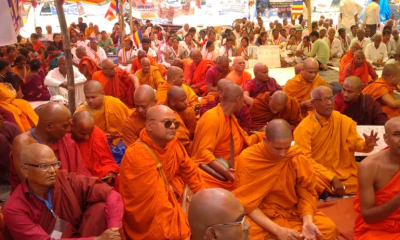
 Foreign News6 days ago
Foreign News6 days agoBuddhism’s holiest site erupts in protests over Hindu ‘control’ of shrine
-
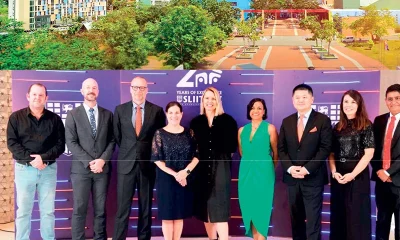
 Features4 days ago
Features4 days agoCelebrating 25 Years of Excellence: The Silver Jubilee of SLIIT – PART I
-

 Editorial6 days ago
Editorial6 days agoWhen tractors become cars!
-
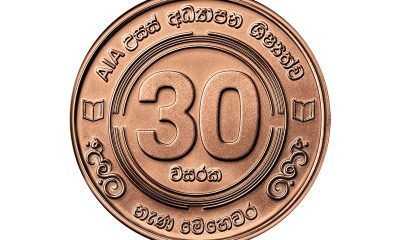
 Business3 days ago
Business3 days agoAIA Higher Education Scholarships Programme celebrating 30-year journey
-
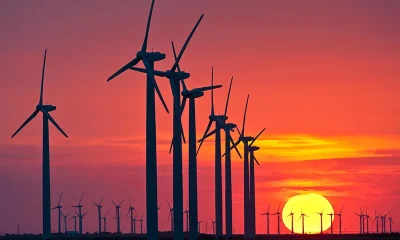
 Business4 days ago
Business4 days agoCEB calls for proposals to develop two 50MW wind farm facilities in Mullikulam
-
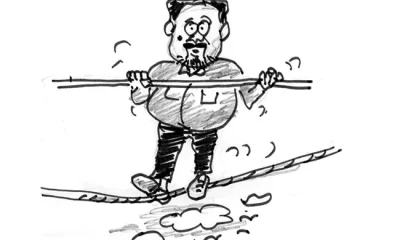
 Features4 days ago
Features4 days agoNotes from AKD’s Textbook
-
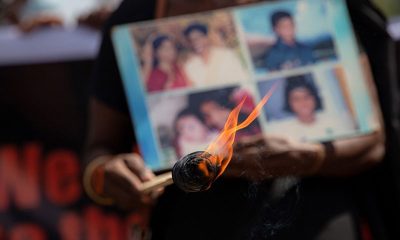
 Features6 days ago
Features6 days agoPolitics of Enforced Disappearances in Sri Lanka
-
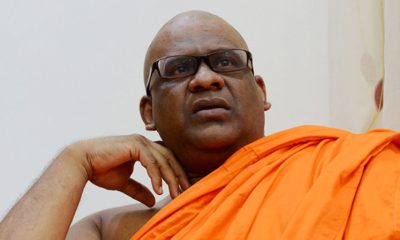
 News1 day ago
News1 day agoGnanasara Thera urged to reveal masterminds behind Easter Sunday terror attacks

